Antifibrinolytic therapy for aneurysmal subarachnoid haemorrhage
- PMID: 36350005
- PMCID: PMC9644641
- DOI: 10.1002/14651858.CD001245.pub3
Antifibrinolytic therapy for aneurysmal subarachnoid haemorrhage
Abstract
Background: Rebleeding is an important cause of death and disability in people with aneurysmal subarachnoid haemorrhage. Rebleeding is probably related to the dissolution of the blood clot at the site of the aneurysm rupture by natural fibrinolytic activity. This review is an update of previously published Cochrane Reviews.
Objectives: To assess the effects of antifibrinolytic treatment in people with aneurysmal subarachnoid haemorrhage.
Search methods: We searched the Cochrane Stroke Group Trials Register (May 2022), CENTRAL (in the Cochrane Library 2021, Issue 1), MEDLINE (December 2012 to May 2022), and Embase (December 2012 to May 2022). In an effort to identify further published, unpublished, and ongoing studies, we searched reference lists and trial registers, performed forward tracking of relevant references, and contacted drug companies (the latter in previous versions of this review).
Selection criteria: Randomised trials comparing oral or intravenous antifibrinolytic drugs (tranexamic acid, epsilon amino-caproic acid, or an equivalent) with control in people with subarachnoid haemorrhage of suspected or proven aneurysmal cause.
Data collection and analysis: Two review authors (MRG & WJD) independently selected trials for inclusion, and extracted the data for the current update. In total, three review authors (MIB & MRG in the previous update; MRG & WJD in the current update) assessed risk of bias. For the primary outcome, we dichotomised the outcome scales into good and poor outcome, with poor outcome defined as death, vegetative state, or (moderate) severe disability, assessed with either the Glasgow Outcome Scale or the Modified Rankin Scale. We assessed death from any cause, rates of rebleeding, delayed cerebral ischaemia, and hydrocephalus per treatment group. We expressed effects as risk ratios (RR) with 95% confidence intervals (CI). We used random-effects models for all analyses. We assessed the quality of the evidence with GRADE.
Main results: We included one new trial in this update, for a total of 11 included trials involving 2717 participants. The risk of bias was low in six studies. Five studies were open label, and we rated them at high risk of performance bias. We also rated one of these studies at high risk for attrition and reporting bias. Five trials reported on poor outcome (death, vegetative state, or (moderate) severe disability), with a pooled risk ratio (RR) of 1.03 (95% confidence interval (CI) 0.94 to 1.13; P = 0.53; 5 trials, 2359 participants; high-quality evidence), which showed no difference between groups. All trials reported on death from all causes, which showed no difference between groups, with a pooled RR of 1.02 (95% CI 0.90 to 1.16; P = 0.77; 11 trials, 2717 participants; high-quality evidence). In trials that combined short-term antifibrinolytic treatment (< 72 hours) with preventative measures for delayed cerebral ischaemia, the RR for poor outcome was 0.98 (95% CI 0.81 to 1.18; P = 0.83; 2 trials, 1318 participants; high-quality evidence). Antifibrinolytic treatment reduced the risk of rebleeding, reported at the end of follow-up (RR 0.65, 95% CI 0.47 to 0.91; P = 0.01; 11 trials, 2717 participants; absolute risk reduction 7%, 95% CI 3 to 12%; moderate-quality evidence), but there was heterogeneity (I² = 59%) between the trials. The pooled RR for delayed cerebral ischaemia was 1.27 (95% CI 1.00 to 1.62; P = 0.05; 7 trials, 2484 participants; moderate-quality evidence). However, this effect was less extreme after the implementation of ischaemia preventative measures and < 72 hours of treatment (RR 1.10, 95% CI 0.83 to 1.46; P = 0.49; 2 trials, 1318 participants; high-quality evidence). Antifibrinolytic treatment showed no effect on the reported rate of hydrocephalus (RR 1.09, 95% CI 0.99 to 1.20; P = 0.09; 6 trials, 1992 participants; high-quality evidence).
Authors' conclusions: The current evidence does not support the routine use of antifibrinolytic drugs in the treatment of people with aneurysmal subarachnoid haemorrhage. More specifically, early administration with concomitant treatment strategies to prevent delayed cerebral ischaemia does not improve clinical outcome. There is sufficient evidence from multiple randomised controlled trials to incorporate this conclusion in treatment guidelines.
Copyright © 2022 The Cochrane Collaboration. Published by John Wiley & Sons, Ltd.
Conflict of interest statement
Menno Germans: co‐investigator in Post 2021 Wouter Dronkers: none known Merih Baharoglu: none known René Post: investigator in Post 2021 Dagmar Verbaan: principal investigator in Post 2021 Gabriel Rinkel: co‐investigator in Roos 2000a Yvo Roos: principal investigator in Roos 2000a None of the review authors have any financial or other commercial conflict of interest to disclose.
Figures
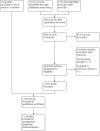
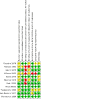

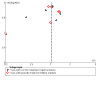



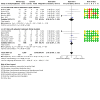
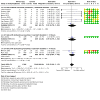
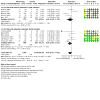
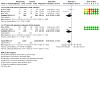
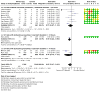
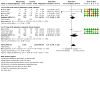
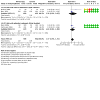
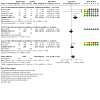

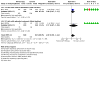
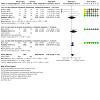
Update of
-
Antifibrinolytic therapy for aneurysmal subarachnoid haemorrhage.Cochrane Database Syst Rev. 2013 Aug 30;2013(8):CD001245. doi: 10.1002/14651858.CD001245.pub2. Cochrane Database Syst Rev. 2013. Update in: Cochrane Database Syst Rev. 2022 Nov 9;11:CD001245. doi: 10.1002/14651858.CD001245.pub3. PMID: 23990381 Free PMC article. Updated.
References
References to studies included in this review
Chandra 1978 {published data only}
-
- Chandra B. Treatment of subarachnoid hemorrhage from ruptured intracranial aneurysm with tranexamic acid: a double-blind clinical trial. Annals of Neurology 1978;3:502-4. [MEDLINE: ] - PubMed
Fodstad 1981 {published data only}
-
- Fodstad H, Forssell A, Liliequist B, Schannong M. Antifibrinolysis with tranexamic acid in aneurysmal subarachnoid hemorrhage: a consecutive controlled clinical trial. Neurosurgery 1981;8:158-65. [MEDLINE: ] - PubMed
Girvin 1973 {published and unpublished data}
-
- Girvin JP. The use of antifibrinolytic agents in the preoperative treatment of ruptured intracranial aneurysms. Transactions of the American Neurological Association 1973;98:150-2. [MEDLINE: ] - PubMed
Hillman 2002 {published data only}
-
- Hillman J, Fridriksson S, Nillson O, Yu Z, Saveland H, Jakobsson KE. Immediate administration of tranexamic acid and reduced incidence of early rebleeding after aneurysmal subarachnoid hemorrhage: a prospective randomized study. Journal of Neurosurgery 2002;97:771-8. [MEDLINE: ] - PubMed
Kaste 1979 {published data only}
-
- Kaste M, Ramsay M. Tranexamic acid in subarachnoid hemorrhage. A double-blind study. Stroke 1979;10:519-22. [MEDLINE: ] - PubMed
Maurice 1978 {published data only}
Post 2021 {published and unpublished data}
-
- Post R, Germans MR, Vandertop WP, Verbaan D, on behalf of the ULTRA Investigators. Ultra-early tranexamic acid after subarachnoid haemorrhage: a randomised controlled clinical trial. Lancet 2021;397(10269):112-8. - PubMed
Roos 2000a {published and unpublished data}
-
- Roos Y, for the STAR-study group. Antifibrinolytic treatment in aneurysmal subarachnoid haemorrhage: a randomized placebo-controlled trial. Neurology 2000;54:77-82. [MEDLINE: ] - PubMed
Tsementzis 1990 {published data only}
-
- Tsementzis SA, Hitchcock ER, Meyer CH. Benefits and risks of antifibrinolytic therapy in the management of ruptured intracranial aneurysms. A double-blind placebo-controlled study. Acta Neurochirurgica 1990;102:1-10. [MEDLINE: ] - PubMed
-
- Tsementzis SA, Honan WP, Nightingale S, Hitchcock ER, Meyer CH. Fibrinolytic activity after subarachnoid haemorrhage and the effect of tranexamic acid. Acta Neurochirurgica 1990;103:116-21. - PubMed
Van Rossum 1977 {published data only}
-
- Van Rossum J, Wintzen AR, Endtz LJ, Schoen JH, Jonge H. Effect of tranexamic acid on rebleeding after subarachnoid hemorrhage: a double-blind controlled clinical trial. Annals of Neurology 1977;2:238-42. [MEDLINE: ] - PubMed
Vermeulen 1984 {published data only}
-
- Vermeulen M, Lindsay KW, Murray GD, Cheah F, Hijdra A, Muizelaar JP, et al. Antifibrinolytic treatment in subarachnoid hemorrhage. New England Journal of Medicine 1984;311:432-7. [MEDLINE: ] - PubMed
References to studies excluded from this review
Adams 1981 {published data only}
-
- Adams HP Jr, Nibbelink DW, Torner JC, Sahs AL. Antifibrinolytic therapy in patients with aneurysmal subarachnoid hemorrhage. A report of the cooperative aneurysm study. Archives of Neurology 1981;38:25-9. [MEDLINE: ] - PubMed
Brzecki 1974 {published data only}
-
- Brzecki A, Misztal S. Results of Trasylol treatment of subarachnoid hemorrhage [Wyniki leczenia Trasylolem krwotoku podpajeczynowkowego]. Polski Tygodnik Lekarski 1974;29(2):53-5. [MEDLINE: ] - PubMed
Chowdhary 1979 {published data only}
-
- Chowdhary UM, Carey PC, Hussein MM. Prevention of early recurrence of spontaneous subarachnoid haemorrhage by epsilon-aminocaproic acid. Lancet 1979;1:741-3. [MEDLINE: ] - PubMed
Chowdhary 1981 {published data only}
Chowdhary 1986 {published data only}
-
- Chowdhary UM, Sayed K. Prevention of early recurrence of aneurysmal subarachnoid haemorrhage by tranexamic acid: a controlled clinical trial. Vascular Surgery 1986;1:8-13. [EMBASE: 1986195828]
Eastin 2014 {published data only}
-
- Eastin TR, Snipes CD, Seupaul RA. Are antifibrinolytic agents effective in the treatment of aneurysmal subarachnoid hemorrhage? Annals of Emergency Medicine 2014;64(6):658-9. [PMID: ] - PubMed
Fodstad 1978 {published data only}
-
- Fodstad H, Liliequist B, Schannong M, Thulin CA. Tranexamic acid in the preoperative management of ruptured intracranial aneurysms. Surgical Neurology 1978;10:9-15. [MEDLINE: ] - PubMed
Gelmers 1980 {published data only}
-
- Gelmers HJ. Prevention of recurrence of spontaneous subarachnoid haemorrhage by tranexamic acid. Acta Neurochirurgica 1980;52:45-50. [MEDLINE: ] - PubMed
Additional references
Adams 1982
-
- Adams HP. Current status of antifibrinolytic therapy for treatment of patients with aneurysmal subarachnoid hemorrhage. Stroke 1982;13:256-9. [MEDLINE: ] - PubMed
Adams 1987
-
- Adams HP. Antifibrinolytics in aneurysmal subarachnoid hemorrhage. Do they have a role? Maybe. Archives of Neurology 1987;44:114-5. [MEDLINE: ] - PubMed
Biller 1988
-
- Biller J, Godersky JC, Adams HP. Management of aneurysmal subarachnoid hemorrhage. Stroke 1988;19:1300-5. [MEDLINE: ] - PubMed
Carley 2005
Chawjol 2008
-
- Chawjol M, Starke RM, Kim GH, Majer SA, Connolly ES. Antifibrinolytic therapy to prevent early rebleeding after subarachnoid hemorrhage. Neurocritical Care 2008;8:418-26. [MEDLINE: ] - PubMed
Connolly 2012
-
- Connolly ES, Rabinstein AA, Carhuapoma JR, Derdeyn CP, Dion J, Higashida RT, et al. Guidelines for the management of aneurysmal subarachnoid hemorrhage: a guideline for healthcare professionals from the American Heart Association/American Stroke Association. Stroke 2012;43:1711-37. [MEDLINE: ] - PubMed
Fodstad 1982
-
- Fodstad H. Antifibrinolytic treatment in subarachnoid haemorrhage: present state. Acta Neurochirurgica 1982;63:233-44. [MEDLINE: ] - PubMed
Gaberel 2012
-
- Gaberel T, Magheru C, Emery E, Derlon JM. Antifibrinolytic therapy in the management of aneurismal subarachnoid hemorrhage revisited. A meta-analysis. Acta Neurochirurgica 2012;154(1):1-9. [PMID: ] - PubMed
Germans 2013
Germans 2014
Gibbs 1967
Guo 2011
-
- Guo L, Zhou H, Xu J, Wang Y, Qiu Y, Jiang J. Risk factors related to aneurysmal rebleeding. World Neurosurgery 2011;76:292-8. [MEDLINE: ] - PubMed
Higgins 2011
-
- Higgins JPT, Green S, editor(s). Cochrane Handbook for Systematic Reviews of Interventions Version 5.1.0 (updated March 2011). The Cochrane Collaboration, 2011. Available from training.cochrane.org/handbook/archive/v5.1/. [URL: www.handbook.cochrane.org]
Higgins 2022
-
- Higgins JPT, Thomas J, Chandler J, Cumpston M, Li T, Page MJ, et al, editor(s). Cochrane Handbook for Systematic Reviews of Interventions Version 6.3 (updated February 2022). Cochrane, 2022. Available from training.cochrane.org/handbook. [URL: www.training.cochrane.org/handbook]
Lefebvre 2021
-
- Lefebvre C, Glanville J, Briscoe S, Littlewood A, Marshall C, Metzendorf M-I, et al. Technical Supplement to Chapter 4: Searching for and selecting studies. In: Higgins JPT, Thomas J, Chandler J, Cumpston MS, Li T, Page MJ, et al, editor(s). Cochrane Handbook for Systematic Reviews of Interventions Version 6.2 (updated February 2021). Cochrane, 2021 . Available from training.cochrane.org/handbook/archive/v6.2. [www.training.cochrane.org/handbook.]
Lindsay 1987
-
- Lindsay KW. Antifibrinolytic agents in subarachnoid haemorrhage. Journal of Neurology 1987;234:1-8. [MEDLINE: ] - PubMed
Locksley 1966
-
- Locksley HB. Natural history of subarachnoid hemorrhage, intracranial aneurysms and arteriovenous malformations. Journal of Neurosurgery 1966;25:321-68. [MEDLINE: ] - PubMed
Maira 2006
-
- Maira G, Albanese A, Pentimalli L, Tirpakova B. Treatment of intracranial aneurysms. Clinical and Experimental Hypertension 2006;28:371-6. [MEDLINE: ] - PubMed
Mayberg 1994
-
- Mayberg MR, Batjer HH, Dacey R, Diringer M, Haley EC, Heros RC, et al. Guidelines for the management of aneurysmal subarachnoid hemorrhage. A statement for healthcare professionals from a special writing group of the Stroke Council, American Heart Association. Circulation 1994;90:2592-605. [MEDLINE: ] - PubMed
Mullan 1967
Naidech 2005
-
- Naidech AM, Janjua N, Kreiter KT, Ostapkovich ND, Fitzsimmons BF, Parra A, et al. Predictors and impact of aneurysm rebleeding after subarachnoid hemorrhage. Archives of Neurology 2005;62:410-6. - PubMed
Ramirez 1981
-
- Ramirez-Lassepas M. Antifibrinolytic therapy in subarachnoid hemorrhage caused by ruptured intracranial aneurysm. Neurology 1981;31:316-22. [MEDLINE: ] - PubMed
Ren 2021
Review Manager Web 2020 [Computer program]
-
- Review Manager Web 5 (RevMan Web 5). Version 5.4.1. The Cochrane Collaboration, 2020. Available at revman.cochrane.org.
Rinkel 2008
-
- Rinkel GJ. Medical management of patients with aneurysmal subarachnoid haemorrhage. International Journal of Stroke 2008;3:193-204. [MEDLINE: ] - PubMed
Roos 2000b
Stienen 2018
-
- Stienen MN, Germans MR, Burkhardt JK, Neidert MC, Fung C, Bervini D, et al. Predictors of in-hospital death after aneurysmal subarachnoid hemorrhage: analysis of a nationwide database (Swiss SOS [Swiss Study on Aneurysmal Subarachnoid Hemorrhage]). Stroke 2018;49(2):333-40. [DOI: 10.1161/STROKEAHA.117.019328] - DOI - PubMed
Van Gijn 2001
-
- Van Gijn J, Rinkel GJ. Subarachnoid haemorrhage: diagnosis, causes and management. Brain 2001;124:249-78. [MEDLINE: ] - PubMed
Van Gijn 2007
-
- Van Gijn J, Kerr RS, Rinkel GJ. Subarachnoid haemorrhage. Lancet 2007;369:306-18. [MEDLINE: ] - PubMed
Vergouwen 2010
-
- Vergouwen MD, Vermeulen M, Gijn J, Rinkel GJ, Wijdicks EF, Muizelaar JP, et al. Definition of delayed cerebral ischemia after aneurysmal subarachnoid hemorrhage as an outcome event in clinical trials and observational studies: proposal of a multidisciplinary research group. Stroke 2010;41(10):2391-5. [DOI: 10.1161/STROKEAHA.110.589275] - DOI - PubMed
Vermeulen 1980
-
- Vermeulen M, Muizelaar JP. Do antifibrinolytic agents prevent rebleeding after rupture of a cerebral aneurysm? A review. Clinical Neurology and Neurosurgery 1980;82:25-30. [MEDLINE: ] - PubMed
Vermeulen 1983
-
- Vermeulen M, Gijn J, Blijenberg BG. Spectrophotometric analysis of CSF after subarachnoid hemorrhage: limitations in the diagnosis of rebleeding. Neurology 1983;33:112-4. [MEDLINE: ] - PubMed
Vermeulen 1996
-
- Vermeulen M. Subarachnoid haemorrhage: diagnosis and treatment. Journal of Neurology 1996;243:496-501. [MEDLINE: ] - PubMed
Weaver 1994
-
- Weaver JP, Fisher M. Subarachnoid hemorrhage: an update of pathogenesis, diagnosis and management. Journal of the Neurological Sciences 1994;125:119-31. [MEDLINE: ] - PubMed
Weir 1987
-
- Weir B. Antifibrinolytics in subarachnoid hemorrhage. Do they have a role? No. Archives of Neurology 1987;44:116-8. [MEDLINE: ] - PubMed
References to other published versions of this review
Baharoglu 2013
Roos 1998
Publication types
MeSH terms
Substances
LinkOut - more resources
Full Text Sources
Medical

